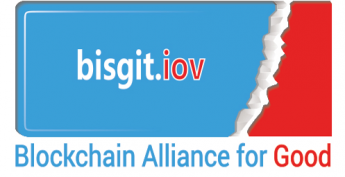[this project is one of the feeder attribute components of the crade-to-grave blockchain for leather provenance]
Background
Proper waste management is an integral part of a successful economy. An average person generates about 2.6 pounds of waste daily (Loki, 2016). In 2012, world’s urban centres were producing “1.3 billion tonnes of solid waste per year” (Hoornweg and Bhada-Tata, 2012). This figure is projected to “increase to 2.2 billion tonnes by year 2025” (Hoornweg and Bhada-Tata, 2012). Based on the projected increase in global waste generation, it can be concluded that the demand for efficient waste disposal is increasing. In order to deal with this raising demand, it is important to consider innovative ways to reduce, reuse, and recycle human waste. Improper waste disposal has potential to contaminate water sources, pollute air, and increase health risks in local population (Shah, 2007).
Based on the initial research conducted using The University of Northampton Nelson search engine, it appears that there is a limited amount of information on the number of recycling programs in leather industry. According to the gathered information, it seems that recycling in the leather industry is mostly limited to the shoe sector. Shoe manufacturers, such as Nike, encourage their consumers to send them back any old or defective shoes to be sorted and recycled in their factories (Lee and Rahimifard, 2012).
From the initial online research it appears that there is an increasing trend for the use of recycled materials. For example, several companies in different parts of the world are manufacturing leather goods from the recycled leather material. According to the initial research using Nelson engine, it can be concluded that some of the companies in the leather recycling market, such as Remade USA, reuse old leather pieces to make smaller leather items. Others compost leather fibres from the old material and, after combining those with additives, produce new synthetic leather products. A few companies such as Ecodomo and Looptworks are going a step further by producing innovative products from the composted leather, such as blended fabrics and tiles.
This project will attempt to address the lack of leather recycling initiatives in the industry and provide recommendations based on the collected data.
Aims and Objectives
Objective 1: Determine the post-consumer leather waste disposal trends
Aim 1: Analysis of historical and current leather waste disposal trends
Aim 2: Through upcycling manufacturers’ interviews identify the non-financial value of the leather recycling
Aim 3: Through literature review and interviews, identify strategies and challenges associated with reutilisation of recycled leather by manufacturers
Objective 2: Determine ways to increase post-consumer leather recycling
Aim 1: compare and contrast trends in plastics and paper industries to predict possible benefits/increase of leather recycling
Aim 2: conduct consumer questionnaire to determine the non-financial value of the leather recycling
Objective 3: Provide recommendations of potential ways and create a possible plan to effectively deal with post-consumer leather disposal
Methodology
- Electronic sources for literature review
- U of N Nelson Search Engine
- Google Scholar
- University and Local Libraries
In this part of the project historical data will be collected and analyzed.
- Leather recycling industry interviews
Interviews of various up-cycling industry manufacturers will be conducted to determine the challenges they’re facing and the non-financial value behind their work.
- Leather consumer questionnaires
Consumer questionnaires will be conducted to identify the attitudes and perspectives of the consumers. The data will be analyzed to trends and used to create a potential recycling plan.
Conclusion
Through literature reviews, consumer questionnaires, and leather upcycling manufacturers’ interviews, the value of the leather recycling will be assessed. Attitudes of the consumers, challenges of the manufacturers, and the historical trends and comparisons will be taken into account to create a potential leather recycling plan.
References
HOORNWEG, D. and BHADA-TATA, P. (2012) ‘What a Waste: A Global Review of Solid Waste Management’, Urban development series, pp. 20.
LOKI, R. (2016) ‘America is a wasteland: The U.S. produces a shocking amount of garbage’, [Online]. Available at: http://www.salon.com/2016/07/15/america_is_a_wasteland_the_u_s_produces_a_shocking_amount_of_garbage_partner/. [Accessed 24 February 2017]
LEE, M.J. and RAHIMIFARD, S. (2012) ‘An air-based automated material recycling system for postconsumer footwear products’, Elsevier, vol. 69, December, pp. 90-99.
SHAH, R. (2007) ‘Waste Statistics’, Workshop on Environmental Statistics, July, pp. 1-36.
